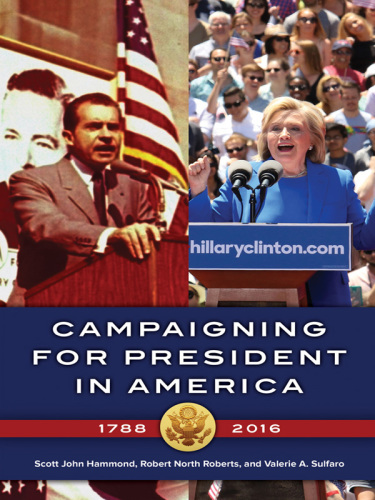
Campaigning for President in America, 1788–2016
کتاب های مرتبط
- اطلاعات
- نقد و بررسی
- دیدگاه کاربران
نقد و بررسی

August 1, 2016
Precedent for the name-calling of the 2016 presidential campaigns lies in 1800the first election without George Washingtonwhen Thomas Jefferson's opponents accused him of being cowardly, mean, the son of a half-breed, a phony Southern rube who fed on coarse cornmeal and fricasseed bullfrog, a robber of widows, and more. Insults make headlines that camouflage serious campaign issues, such as nativism, immigration, civil rights, economic inequality, education reform, race relations, energy policy, health care, trade, gun control, character issues, and American exceptionalism. These, plus fairly recent topics (e.g., Internet campaigning, birther, early voting, LGBTQ issues), populate a selective AZ of expository articles often cited in the latter half of the book, consisting of quadrennial analyses of every election since 1788.Each election's report explains the issues that set the stage for the campaign, how it relates to the previous four years, the maneuvering for nomination, the contending parties' positions, and the factors that contributed to the nominees' success. Analysis of the nominees' campaigns explains their strategies, their ups and downs, the societal memes they attempted to exploit, and how and why the winner achieved victory. Reports of popular and electoral votes compare the tallies to pertinent earlier elections and note regional shifts and trends. Both the topical and historical sections of this consistently objective and analytical encyclopedia-cum-history will reward readers who want to understand recurring and one-off phenomena in electoral history. The concluding chapter's dispassionate look at the early part of the 2016 race contrasts nicely with the predictably biased coverage of some cable TV networks.(Reprinted with permission of Booklist, copyright 2016, American Library Association.)

























دیدگاه کاربران